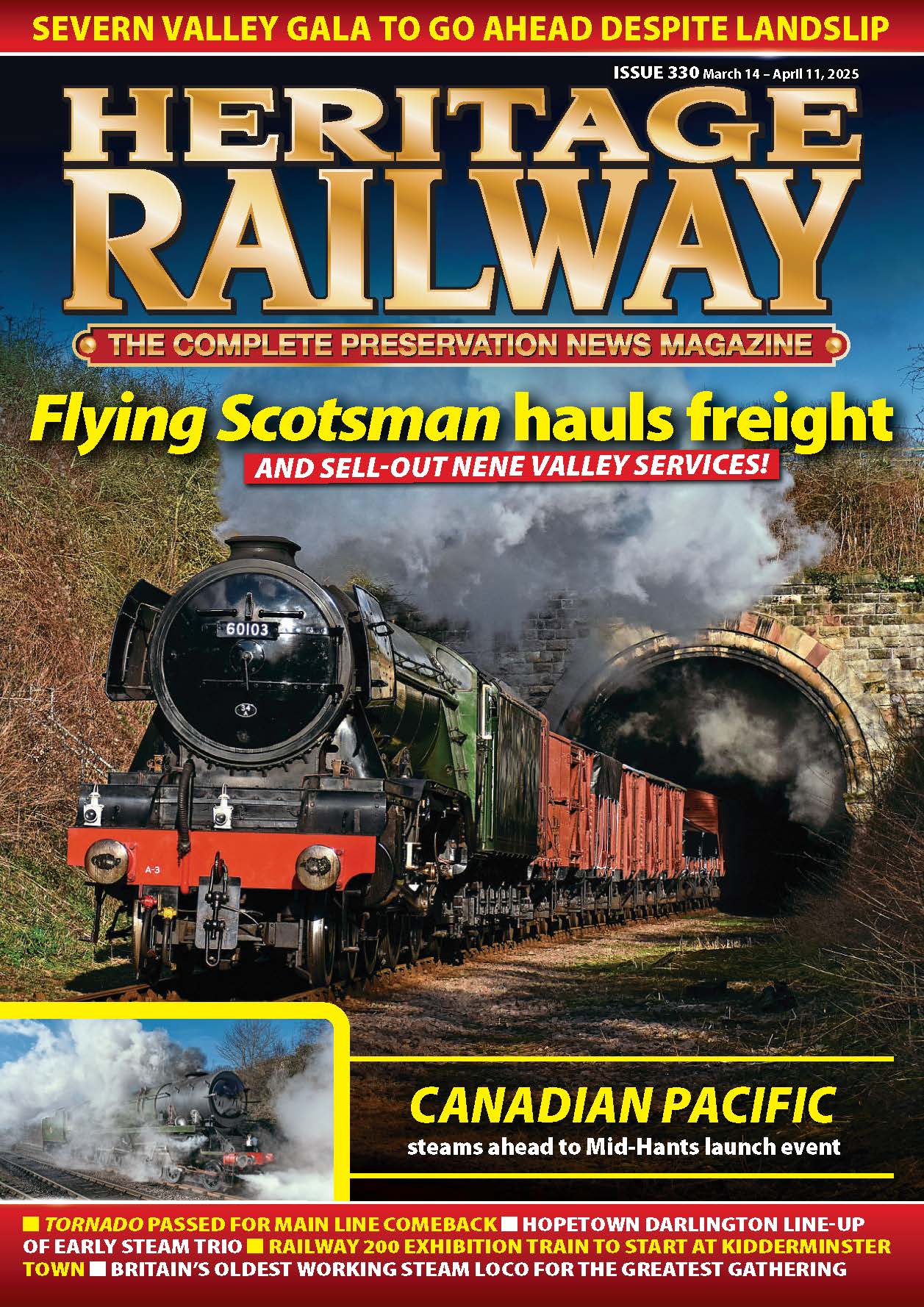An eagerly awaited return to steam is the 0-4-0ST sold by the Great Eastern Railway in 1917. Mark Smithers reports on the overhaul being carried out at the Flour Mill.
The world of railway preservation is full of stories of tragic near-misses in terms of locomotives and other items that should have survived, but for one reason or another failed to do so. Fortunately, however, there are also those relics that somehow managed to survive against all the odds. The subject of this feature falls into this latter category and is currently undergoing restoration at the Flour Mill Workshops in Bream, Gloucestershire.
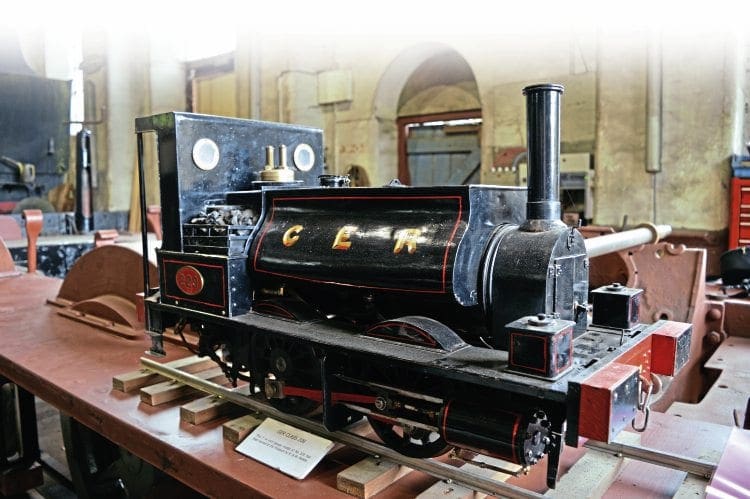
From the 1850s onwards, Neilson of Glasgow was noted for its 0-4-0ST designs for light shunting, industrial or contractors’ use and the original specimens were characterised by their flat-sided ‘box tanks’ covering boiler barrel and smokebox, outside horizontal cylinders, cast-iron wheel centres with T-section spokes and steam dome mounted on the firebox wrapper (a specification copied by Kilmarnock manufacturer Andrew Barclay for several of its early products).
The ‘Ogee’ tank
Enjoy more Heritage Railway reading in the four-weekly magazine.
Click here to subscribe & save.
Not long after the introduction of the ‘box tanks’, another tank configuration began to appear as part of the Glasgow maker’s product policy, namely the ‘ogee’ tank in which the upper side portions of the tank had a ‘reverse curve’ profile (as opposed to the more conventional profile of the lower portions, while the flat top of the ‘box tanks’ was retained. The design that was adopted by the Great Eastern Railway was delineated by Neilson drawing 8476 of December 17, 1874 and the first two class members were delivered during the same year under order No. E429 and makers Nos. 1940/2, becoming GER Nos. 209-10.
As built, the engines possessed many features derived from the ‘box tanks’, including the ‘back dome’ boiler with raised wrapper; the T-section wheel spokes; the horizontal cylinders (12in diameter and 20in stroke) and ‘lift-up’ smokebox door, but they also possessed later features such as the full-extent running boards and tapered stovepipe chimneys. The external motion bearings were all of the split cotter variety, while the brake blocks were of wood and the leading sandboxes were integral with the cylinders, sitting in the space between the steam passages.
Two further locomotives were added in 1876 under order No. E431, works Nos. 2118-9, entering GER service with the running numbers 228-9. They differed little in design from the first pair, save for an increase in nominal wheel diameter from 3ft 6in to 3ft 7in. The Neilson ‘Ogee Tanks’ had been ordered for light shunting duties, principally in the London area, such as in the low-level goods yard at Devonshire Street (Mile End) and on the Blackwall Pepper Warehouse branch from Canning Town.
Renewal of components
When Nos. 209-10 were due for heavy overhauls in 1894, the decision was made to undertake certain design improvements, which would have necessitated renewal of many components. New boilers were fitted (140 psi working pressure in lieu of the original 120psi), on which the previously used Salter safety valves were replaced by valves of Ramsbottom pattern, allied to a more austere dome profile. The smokebox door design was also altered: the ‘lift-up’ pattern giving way to a pair of rectangular side-hinged doors.
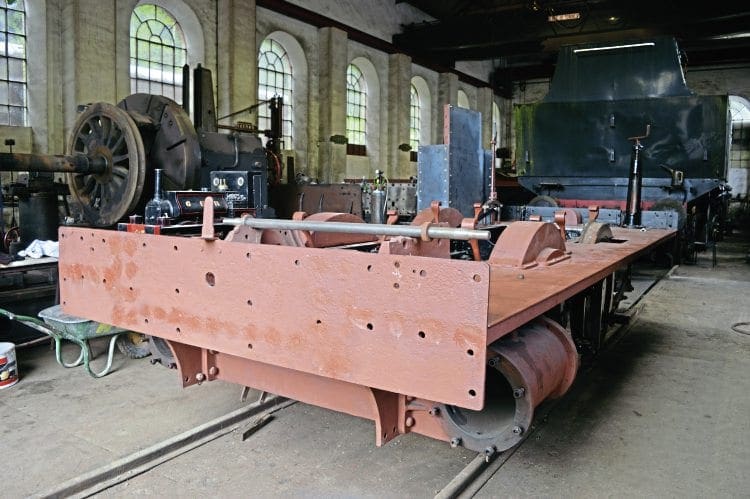
Separate running board-mounted leading sandboxes replaced the previous arrangement, while a steam brake was fitted, necessitating the relocation of the handbrake column from immediately behind the left hand side of the firebox backhead to a position close to the rear of the cab on the same side of the locomotive. This latter modification necessitated alteration to the design of the rear portion of the mainframes.
In addition, enclosed cabs with a ‘wrap-over’ roof were fitted and plain bearings replaced the split cotter variety on the coupling rods. Two new locomotives, GER Nos. 226-7 were constructed basically to the revised design in 1897 at Stratford Works, although they were immediately distinguishable from their precursors by their cast-steel wheels with 10 plain spokes, raised tank fillers and higher coal bunkers with two rails instead of three. These were duplicated by the final pair of 1903 Stratford-built products, which bore the GER Nos. 230-1.
Adapted for a new career
The earlier four locomotives eventually received cast-steel wheel centres, but retained the lower profile tank fillers and earlier pattern coal bunkers. Their boilers were replaced again in 1907-08. By 1911 thoughts were turning towards the replacement of the ‘Ogee Tanks’ by a more powerful class (a process that actually began some two years later) and the two 1897-built specimens, Nos. 226-7 were withdrawn in August and December of that year, to be followed by
No. 210 in September 1914.
Shortly afterwards, No. 229 became the class pioneer in being adapted for a new career. This was the testing of carriage brakes, for which the engine was fitted with Westinghouse and vacuum brake equipment (totally independent of the locomotive’s hand and steam brakes) and steam heating apparatus. An air reservoir was located transversely on the leading portion of the saddle tank (necessitating the mounting of the toolbox crosswise rather than lengthwise on the tank), while the Westinghouse pump was located on the left-hand side of the smokebox, above the cylinder, with the vacuum ejector exhaust into the chimney being mounted on the right-hand side.
No. 230 was similarly adapted in May 1916, while No. 228 (renumbered 0228 in July 1914) followed suit in November 1919 following a spell on hire between November 1915 and July 1918 to the Royal Arsenal at Woolwich. No. 229 was not destined to remain in this condition for long as it was withdrawn in February 1917 and sold, without its recently added fittings, to the Admiralty for No. 1 National Shipyard, Beachley Dock, Chepstow.
Before considering the locomotive’s career after sale, it will be useful to detail the fate of its sisters. Of the remaining locomotives in GER service not fitted for carriage brake testing, No. 209 (as 7209) was withdrawn by the LNER in 1926 and No. 231 as 7231 in 1931, having been fitted for a short period before the Grouping with a warning bell, cowcatchers and tram-pattern side skirts for working on quayside lines at Hythe near Colchester, equipment that was soon removed as there was no legal requirement for it.
Of the brake-testing locomotives, No. 0228’s final duty was heating water for filling carriage foot-warmers at Stratford before withdrawal (as 07228) in 1927, while No. 230, renumbered 7230 by the LNER became a ‘celebrity’ during the 1930s as it appeared at several exhibitions at former GER stations, complete with the brake testing equipment and non-standard (taper shank leading and parallel shank trailing) buffer arrangement that it carried at the time.
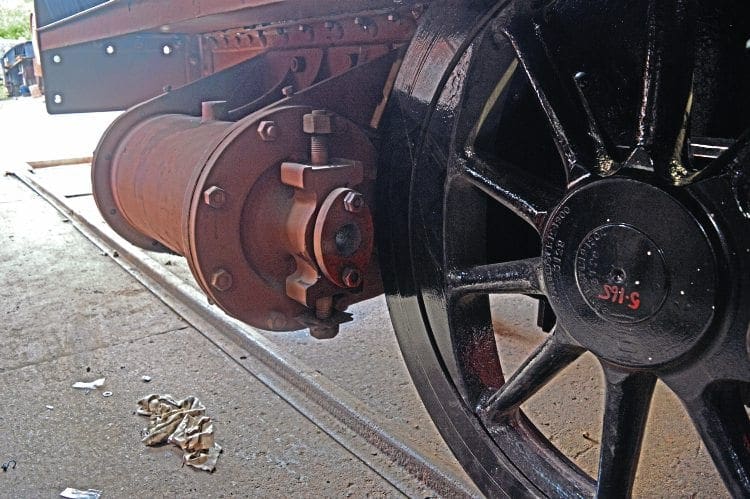
The only survivor
Latterly employed at Stratford works, this locomotive is believed finally to have lost the brake testing equipment and received parallel shank buffers all round during an overhaul in April 1944, becoming No. 8081 under the 1946 renumbering scheme and surviving sufficiently long to be allocated BR No. 68081 on Nationalisation. Sadly, during an overhaul commenced in February 1948, the engine’s 1934-built boiler was found to have become life-expired and it was officially condemned and withdrawn during the following April.
The loss of No. 8081 ensured that the erstwhile GER No. 229 became the only survivor of its class. Following the Armistice of 1918, the Chepstow shipyard passed to the ownership of Fairfield Shipbuilding Co Ltd (later Fairfield Mabey). Photographic evidence shows that by 1948, the engine had been altered in the profile of its coal bunkers, which were made deeper, and by means of a rounded upward extension to the saddle tank. A ‘1950’ date stamp on the rear left-hand tyre indicates that the locomotive was still in working order at this time and it is believed to have remained operational at least until the latter part of the decade.
Following withdrawal (and despite the engine’s, undoubted historic value), a long period of dereliction and uncertainty about
No. 229’s future followed. There were occasional mentions of its plight in railway periodicals, particularly during the 1970s, but even with the publicity generated in this manner, No. 229 looked destined to join the ‘roll of shame’ of historic main line sales into industry (and related designs) that were apparently overlooked by the preservation movement at large from the late 1950s onwards.
Fortunately this fate was not to befall the engine and rescue came as a result of the efforts of Bill Parker and a move to the Dean Forest Railway Society’s base at Norchard Steam Centre on November 7, 1982. Following cosmetic restoration to 1910 condition,
No. 229 was moved to the now-defunct North Woolwich Old Station Museum in London on September 12, 1984 and even achieved the distinction of appearing on the front of the capital’s Time Out magazine shortly afterwards.
With the closure of the museum though, the locomotive was once again looking for a new home and on June 5, 2008 it was removed from the site and transferred to the Flour Mill Workshop for restoration to working order after over half a century of inactivity.
The restoration of a locomotive of the rarity of No. 229 from its current condition presents a major dilemma, namely that of conservation of components versus operational expediency (the current project to return the Ffestiniog Railway’s ‘Large England’ 0-4-0STT Welsh Pony comes to mind as presenting similar, if not more acute difficulties).
Surprisingly good condition
As to the engine’s uniqueness, the only known close-surviving relative is to be found at a cement works in Abono, Spain: Neilson
No. 1777 of 1873. As with No. 229, this 5ft 6in gauge variant J Masaveu has undergone a fair amount of modification over the years and appears to have acquired a boiler barrel-mounted steam dome, but it does retain some important original design features, such as the liftup smokebox door and the timber brake blocks.
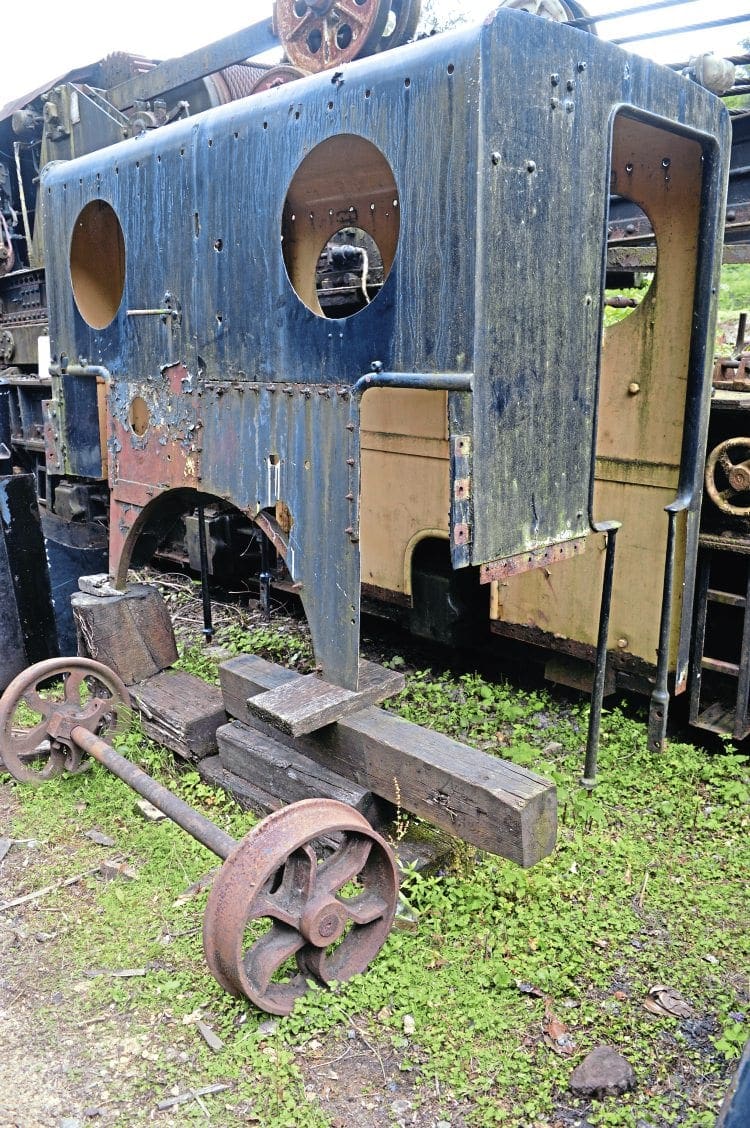
Despite No. 229’s period out of use, the chassis is in surprisingly good condition, although cracking of the ‘as received’ castings had ensured the need for total replacement of the locomotive’s hornblocks. The mainframes and cylinders have turned out to be in generally good condition although a strengthening section has had to be added to the left-hand mainframe towards the rear of the chassis in order to make good corrosion. This is shown in the accompanying illustrations.
The leading left-hand wheel and its associated area of the axle are stamped with the year ‘1900’ and this would be a good guide to the date of fitting of cast-steel wheels to the Neilson-built class members. Contrary to some earlier assertions, there is no evidence to suggest that No. 229 retained cast-iron wheel centres at the time of its sale by the GER in 1917, the only way that this could have happened would have been if the LNER had sold wheelsets from either 7209, 07228 or 7231 to Fairfield following withdrawal, an exceptionally unlikely possibility!
As with any locomotive that has been in open storage for a long time, the platework has suffered a considerable amount of corrosion and total renewal of the fooplate/running boards and coal bunkers has been necessary. The ‘as received’ items have been retained as a source of reference for the manufacture of replacement components and close examination of the leading left-hand section of running board reveals the mounting holes for the Westinghouse pump fitted during the days when the engine was used for carriage brake testing.
‘Celebrity lookalike’
These would be a useful guide should the decision be taken to restore No. 229 to ‘brake testing’ condition. Such a restoration would require the sourcing of the necessary additional components, presumably including two pairs of ‘circular flange’ buffers, one of taper shank pattern and the other with parallel shanks, but would have the attraction of the possibility of the locomotive making ‘celebrity lookalike’ appearances as LNER No. 7230.
One platework component that is reusable is the cab, which will be fitted to the restored locomotive. The saddle tank, however, is to be replaced by a new stainless-steel item, thus obviating the need for the unpleasant task of treating its inner surface with bitumen paint.
The conservation versus replacement dilemma is no better illustrated than with the cast-iron smokebox saddle. This is a well-used item and it has suffered a fair amount of damage over the years, but it is still serviceable in its present condition, despite the fact that it is not feasible to weld in replacement sections for the damaged areas. It has therefore been decided to retain this item in the restoration (similar problems were found with the cylinder castings of ex-Penhryn Quarry locomotives Lillian and Stanhope where the original components were retained during restoration to working order despite the fact that their flanges had suffered impact damage in service from lineside obstructions).
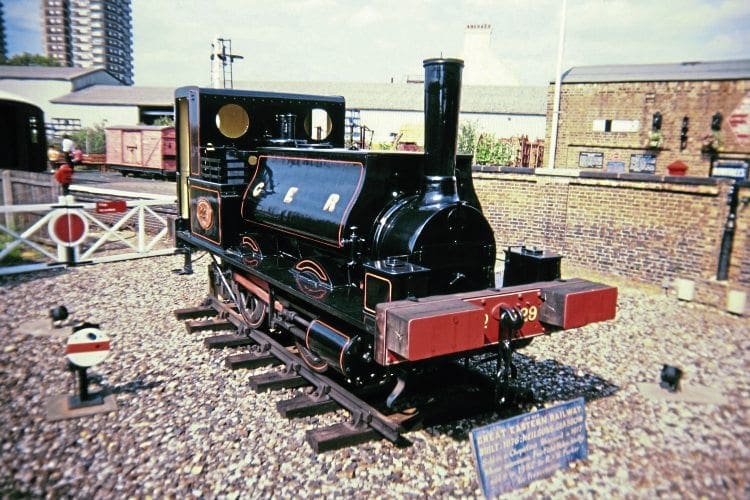
Anticipated with great interest
As is to be expected, however, the boiler requires a great deal of attention and although the ‘as received’ barrel is to be retained, the inner firebox and leading tubeplate are to be replaced, along with the smokebox.
When complete, the restoration of GER No. 229 will constitute an attractive and distinctive addition to the ranks of operational locomotives currently to be found on our preserved railway scene. In particular, the engine makes an interesting comparison with two other surviving Neilson industrial designs that were adopted (and adapted) for main line use, namely the ‘14 inch’ 0-4-0ST design exemplified by North British Railway No. 42 in the care of the Scottish Railway Preservation Society and the 0-4-0 crane tank No. 4004 of 1890 Snipey, privately preserved at Lytham St Annes and built to a specification used by the South Eastern Railway. Given this fact and the locomotive’s propensity for survival to date, No. 229’s return to steam can only be anticipated with great interest.
■ All photographs by author and all except No. 23 taken at the Flour Mill Workshops on July 10.
Read more News and Features in Issue 232 of HR – on sale now!
Archive enquiries to: Jane Skayman on 01507 529423 – [email protected]
Advert
 Enjoy more Heritage Railway reading in the four-weekly magazine. Click here to subscribe.
Enjoy more Heritage Railway reading in the four-weekly magazine. Click here to subscribe.

